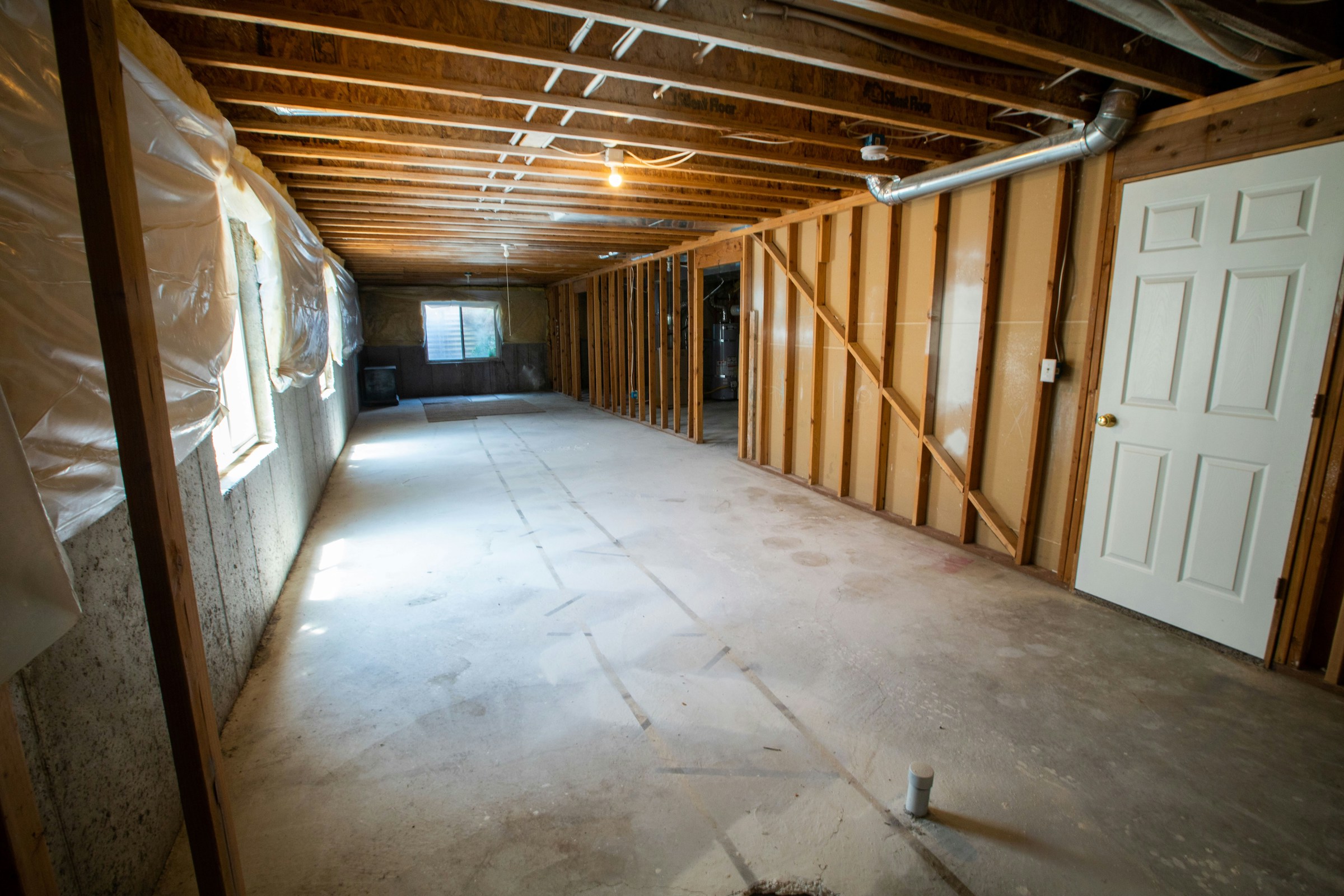A flooded basement is a homeowner’s nightmare, often leading to extensive damage and costly repairs. Whether caused by heavy rain, burst pipes, or a malfunctioning sump pump, water in your basement can result in structural issues, mold growth, and damage to personal belongings.
This comprehensive guide will walk you through the steps of cleaning a flooded basement, from immediate actions to long-term preventive measures. By following these guidelines, you can mitigate damage, restore your basement, and take steps to prevent future flooding.
Assessing the Situation
Safety First
Before entering a flooded basement, ensure it is safe to do so. Turn off the electricity to the basement to avoid the risk of electrical shock. If you are unsure about the safety of entering the basement, consult a professional.
Identifying the Source of Water
Determine the source of the water to address the problem effectively. Common sources include heavy rain, broken pipes, sewage backups, and malfunctioning sump pumps. Identifying the source will help you decide on the appropriate course of action.
Documenting the Damage
Take photos and videos of the flooded basement and any damaged items. This documentation will be helpful when filing insurance claims and assessing the extent of the damage.
Immediate Actions
Removing Standing Water
Use a wet/dry vacuum, submersible pump, or buckets to remove standing water. Start at the lowest point and work your way up. The quicker you remove the water, the less damage it will cause.
Ventilating the Area
Open windows and doors to improve ventilation. Use fans and dehumidifiers to help dry out the basement. Proper ventilation will reduce the risk of mold growth and speed up the drying process.
Removing Wet Materials
Remove any wet materials, such as carpets, rugs, furniture, and personal belongings. These items can retain moisture and contribute to mold growth. If possible, take them outside to dry.
Drying Out the Basement
Using Fans and Dehumidifiers
Place fans and dehumidifiers strategically around the basement to enhance air circulation and speed up the drying process. Run these appliances continuously until the basement is completely dry.
Monitoring Moisture Levels
Use a moisture meter to check the moisture levels in walls, floors, and other structures. Continue drying until the moisture levels are back to normal, typically below 15%.
Checking for Mold
Inspect the basement for signs of mold growth. Mold can appear as black, green, or white patches and often has a musty odor. If you find mold, take appropriate steps to remove it safely.
Cleaning and Sanitizing
Cleaning Hard Surfaces
Clean all hard surfaces, such as walls, floors, and furniture, with a mixture of water and mild detergent. Use a scrub brush to remove dirt and debris. Rinse thoroughly with clean water.
Disinfecting the Area
Disinfect the entire basement to kill any bacteria and prevent mold growth. Use a solution of one cup of bleach per gallon of water. Apply the solution to all surfaces and allow it to sit for at least 10 minutes before rinsing.
Cleaning Soft Materials
Wash any washable fabrics, such as curtains and clothes, in hot water with detergent. For non-washable items, consider professional cleaning or disposal if they are severely damaged.
Dealing with Mold
Identifying Mold
Look for visible signs of mold and check for a musty odor. Mold can grow on walls, floors, ceilings, and personal belongings. Use a mold testing kit if necessary to identify the presence of mold.
Removing Mold Safely
Wear protective gear, including gloves, goggles, and an N95 respirator mask, when removing mold. Use a mixture of one cup of bleach per gallon of water to clean moldy surfaces. Scrub thoroughly and rinse with clean water. Dispose of any materials that cannot be cleaned, such as heavily mold-infested drywall or insulation.
Preventing Future Mold Growth
Keep the basement dry and well-ventilated to prevent mold growth. Use dehumidifiers and ensure proper drainage around the foundation of your home. Regularly inspect the basement for signs of moisture and mold.
Repairing and Restoring the Basement
Assessing Structural Damage
Inspect the basement for structural damage, such as cracks in the walls or foundation. Consult a professional if you find any significant damage that requires repair.
Replacing Damaged Materials
Replace any damaged materials, such as drywall, insulation, and flooring. Use moisture-resistant materials whenever possible to reduce the risk of future damage.
Restoring Personal Belongings
Clean and dry personal belongings thoroughly before bringing them back into the basement. Consider using storage solutions that keep items off the floor to protect them from future flooding.
Preventing Future Flooding
Installing a Sump Pump
A sump pump can help prevent future flooding by removing excess water from the basement. Ensure your sump pump is properly installed and maintained.
Improving Drainage
Improve the drainage around your home to prevent water from accumulating near the foundation. This can include extending downspouts, installing French drains, and grading the soil away from the house.
Waterproofing the Basement
Consider waterproofing your basement to prevent water infiltration. This can include sealing cracks, applying waterproof coatings, and installing a vapor barrier.
Regular Maintenance
Perform regular maintenance on your home’s plumbing and drainage systems to prevent issues that could lead to flooding. Inspect and clean gutters, downspouts, and sump pumps regularly.
Understanding Insurance Coverage
Reviewing Your Policy
Review your homeowner’s insurance policy to understand what is covered in the event of a flood. Standard policies often do not cover flood damage, so consider additional flood insurance if you live in a high-risk area.
Filing an Insurance Claim
Document the damage thoroughly and contact your insurance company as soon as possible to file a claim. Provide all necessary documentation, including photos, videos, and receipts for damaged items.
Working with an Adjuster
An insurance adjuster will assess the damage and determine the compensation you are eligible for. Be present during the inspection and provide any additional information needed to support your claim.
Seeking Professional Help
When to Call a Professional
Consider calling a professional water damage restoration company if the flooding is extensive, if you are unable to remove all the water, or if you suspect significant mold growth or structural damage.
Choosing a Restoration Company
Choose a reputable restoration company with experience in water damage restoration. Check reviews and ask for references to ensure you are hiring a reliable and qualified professional.
Working with Restoration Professionals
Work closely with the restoration professionals to ensure the basement is thoroughly cleaned, dried, and repaired. Ask for detailed reports and documentation of the work completed.
FAQs About Cleaning a Flooded Basement
How long does it take to clean and dry a flooded basement?
The time required to clean and dry a flooded basement depends on the extent of the flooding and the drying methods used. It can take anywhere from a few days to several weeks.
What are the health risks associated with a flooded basement?
Health risks include exposure to mold, bacteria, and contaminants in the water. These can cause respiratory issues, skin irritation, and other health problems.
Can I stay in my home while cleaning a flooded basement?
Yes, you can stay in your home, but avoid spending time in the basement until it is completely dry and cleaned to prevent health risks.
What should I do if my basement floods again after cleaning?
Identify the cause of the new flooding and address it immediately. Remove standing water and follow the same cleaning and drying procedures outlined in this guide.
Can I prevent basement flooding with landscaping?
Yes, proper landscaping can improve drainage and prevent water from accumulating near your foundation. Ensure the soil slopes away from your home and consider installing French drains or other drainage solutions.
How do I know if my sump pump is working properly?
Test your sump pump regularly by pouring water into the sump pit to ensure it activates and pumps water out. Perform regular maintenance and check for any signs of malfunction.
Is it safe to use bleach to clean a flooded basement?
Yes, bleach is effective for disinfecting and killing mold. Use it in a well-ventilated area and follow safety precautions, including wearing protective gear.
What should I do with wet insulation in the basement?
Wet insulation should be removed and replaced, as it can retain moisture and contribute to mold growth. Dispose of the wet insulation properly and install new, moisture-resistant insulation.
How can I improve ventilation in my basement?
Improve ventilation by installing exhaust fans, using dehumidifiers, and ensuring that windows and vents are not blocked. Proper ventilation helps reduce moisture and prevent mold growth.
What are the signs of structural damage in a flooded basement?
Signs of structural damage include cracks in the walls or foundation, sagging floors, and doors or windows that no longer open or close properly. Consult a professional if you notice any of these signs.
Can I clean a flooded basement myself, or do I need professional help?
You can clean a minor flood yourself, but for extensive flooding or if you suspect significant mold growth or structural damage, it is best to seek professional help.
How often should I check my basement for signs of moisture or flooding?
Check your basement regularly, especially during heavy rain or after a snowmelt. Regular inspections can help identify and address issues before they become severe.
What are the best materials to use for basement flooring in flood-prone areas?
Choose moisture-resistant materials such as tile, vinyl, or sealed concrete for basement flooring in flood-prone areas. Avoid carpeting and wood, as these materials can absorb moisture and are difficult to dry out if they become wet.
How do I clean and disinfect items that were in the flooded basement?
Remove any items from the flooded basement and clean them thoroughly with a solution of water and mild detergent. Rinse well and allow to dry completely. For items that can’t be washed, such as electronics, consider professional cleaning services.
How can I tell if my basement walls are dry enough to start repairs?
Use a moisture meter to check the moisture content of the walls. The moisture level should be below 15% before starting repairs to prevent mold growth and ensure the integrity of any new materials.
What is the best way to dry out a basement after flooding?
The best way to dry out a basement is to use a combination of fans, dehumidifiers, and proper ventilation. Remove any standing water first, then use these tools to circulate air and remove moisture from the air and surfaces.
Can I use a regular vacuum cleaner to remove water from the basement?
No, a regular vacuum cleaner is not designed to handle water and can be dangerous to use in wet conditions. Use a wet/dry vacuum or a submersible pump specifically designed for water removal.
How do I prevent mold from growing in my basement after a flood?
To prevent mold growth, thoroughly dry the basement, remove any wet materials, and clean and disinfect all surfaces. Use dehumidifiers to maintain low humidity levels and ensure proper ventilation.
How can I protect my basement from future floods?
Install a sump pump, improve drainage around your home, and consider waterproofing your basement. Regular maintenance of gutters and downspouts, as well as landscaping to direct water away from the foundation, can also help prevent future floods.
What are the signs of mold growth in a basement?
Signs of mold growth include a musty odor, visible mold spots on walls or surfaces, and increased humidity levels. Mold can appear as black, green, or white patches and often grows in damp, dark areas.
How do I clean and restore furniture that was in the flooded basement?
Clean and disinfect furniture with a solution of water and mild detergent, then allow it to dry completely. For upholstered furniture, consider professional cleaning services. Discard any items that cannot be adequately cleaned and dried.
How do I test for mold in my basement?
Use a mold testing kit, available at most hardware stores, to collect samples from surfaces and the air. Send the samples to a lab for analysis to determine the presence and type of mold.
Can I use household fans to dry out my basement?
Yes, household fans can help circulate air and speed up the drying process. However, using high-powered commercial fans and dehumidifiers will be more effective for larger areas and severe flooding.
How do I clean and sanitize my sump pump after a flood?
Turn off and unplug the sump pump before cleaning. Remove any debris from the sump pit and clean the pump with a solution of water and mild detergent. Rinse thoroughly and inspect for any damage before reinstalling.
How can I improve the drainage around my home’s foundation?
Improve drainage by extending downspouts, grading the soil away from the foundation, and installing French drains or other drainage systems. Regularly clean and maintain gutters and downspouts to ensure proper water flow.
What should I do if my basement floods during a storm?
During a storm, prioritize safety and avoid entering the flooded basement until it is safe to do so. Turn off the electricity to the basement, remove any valuable items if possible, and wait for the water to recede before starting the cleanup process.
How do I clean and dry electrical appliances that were in the flooded basement?
Unplug and remove electrical appliances from the flooded basement. Do not attempt to use them until they have been thoroughly cleaned, dried, and inspected by a professional. Water-damaged appliances can be dangerous and may need to be replaced.
What are the health risks of a flooded basement?
Health risks include exposure to mold, bacteria, and other contaminants in the water. These can cause respiratory issues, skin irritation, and other health problems. It is essential to take proper precautions and clean the basement thoroughly to mitigate these risks.
How do I clean and disinfect walls and floors in a flooded basement?
Clean walls and floors with a solution of water and mild detergent, then disinfect with a mixture of one cup of bleach per gallon of water. Scrub surfaces thoroughly, rinse with clean water, and allow them to dry completely.
Can I use a space heater to help dry out my basement?
Yes, a space heater can help speed up the drying process by raising the temperature and promoting evaporation. However, use it in conjunction with fans and dehumidifiers for the best results. Ensure the space heater is used safely and does not pose a fire hazard.
How do I deal with sewage backup in a flooded basement?
Sewage backup requires immediate attention due to health risks. Wear protective gear, remove the sewage water, and thoroughly clean and disinfect the area. Consider hiring a professional for sewage cleanup to ensure it is done safely and effectively.
How do I know if the foundation of my home has been damaged by flooding?
Signs of foundation damage include cracks in the walls or floors, doors or windows that no longer close properly, and uneven floors. If you suspect foundation damage, consult a professional for an inspection and necessary repairs.
How do I clean and restore personal belongings that were in the flooded basement?
Clean personal belongings with a solution of water and mild detergent, then allow them to dry completely. For items that cannot be washed, such as photographs or important documents, consider professional restoration services.
What steps should I take to prevent electrical hazards in a flooded basement?
Turn off the electricity to the basement before entering. Do not use electrical appliances or outlets until they have been inspected and declared safe by a professional. Use battery-powered lights or flashlights instead of electrical lighting.
How do I deal with insurance claims for a flooded basement?
Document the damage thoroughly with photos and videos, and contact your insurance company as soon as possible to file a claim. Provide all necessary documentation, including receipts for damaged items, and work closely with the adjuster to ensure a fair settlement.
How do I clean and restore books and papers that were in the flooded basement?
Gently remove excess water from books and papers by blotting with a dry cloth. Place them in a well-ventilated area to dry, or use a fan to speed up the process. For valuable or irreplaceable items, consider professional restoration services.
What are the best practices for preventing basement flooding in the future?
Best practices for preventing basement flooding include installing a sump pump, improving drainage around the home, waterproofing the basement, and performing regular maintenance on plumbing and drainage systems. Additionally, consider investing in flood insurance if you live in a high-risk area.
How can I prevent my basement from flooding again?
Install a sump pump, ensure proper grading around your home, clean and maintain gutters and downspouts, and consider waterproofing your basement. Regular inspections and maintenance can also help prevent future flooding.
What should I do if my sump pump fails during a flood?
If your sump pump fails during a flood, try to fix it immediately if it’s safe to do so. If not, use a wet/dry vacuum or a submersible pump to remove water. Consider having a backup sump pump or a battery-powered sump pump for emergencies.
Can I use a shop vacuum to remove water from my flooded basement?
Yes, a wet/dry shop vacuum is an effective tool for removing water from a flooded basement. Ensure it is rated for wet use and follow safety instructions to avoid electrical hazards.
How do I deal with mold that keeps returning after cleaning?
Persistent mold issues may indicate underlying moisture problems. Ensure the basement is thoroughly dried, and use a dehumidifier to maintain low humidity levels. Consult a professional if mold continues to return.
What should I do if my basement floods during winter?
If your basement floods during winter, act quickly to remove water and dry out the area. Use space heaters, fans, and dehumidifiers to speed up the drying process. Be cautious of frozen pipes and address any that are found.
How can I tell if my drywall is damaged by flooding?
Signs of drywall damage include swelling, warping, and discoloration. Soft spots or a spongy texture when pressed also indicate damage. Replace any drywall that has been compromised by flooding.
Can I clean and reuse wet insulation?
No, wet insulation should be removed and replaced. Insulation retains moisture and can lead to mold growth and reduced insulating properties if not properly dried and replaced.
How do I clean and disinfect concrete floors after flooding?
Clean concrete floors with a solution of water and mild detergent, then disinfect with a mixture of one cup of bleach per gallon of water. Scrub thoroughly, rinse with clean water, and allow to dry completely.
What are the signs of hidden water damage in a basement?
Signs of hidden water damage include musty odors, peeling paint, warped floors, and unexplained dampness or humidity. Use a moisture meter to detect hidden moisture behind walls and under floors.
How do I clean and restore electronics damaged by flooding?
Remove electronics from the flooded area and dry them as much as possible. Do not turn them on until they have been inspected by a professional. Consider professional cleaning and restoration services for valuable electronics.
What steps should I take immediately after discovering a flooded basement?
Turn off electricity to the basement, remove standing water, ventilate the area, and remove wet materials. Document the damage for insurance purposes and begin the drying process as soon as possible.
Can I use a pressure washer to clean a flooded basement?
Avoid using a pressure washer indoors, as it can cause additional water damage and spread contaminants. Instead, use a wet/dry vacuum and appropriate cleaning solutions for indoor surfaces.
How do I prevent my basement from flooding during heavy rain?
Ensure gutters and downspouts are clean and direct water away from the foundation. Install a sump pump, use French drains or other drainage systems, and check for leaks or cracks in the foundation.
How do I deal with a sewage backup in the basement?
Wear protective gear and remove sewage water with a wet/dry vacuum or submersible pump. Clean and disinfect all surfaces thoroughly and consider hiring a professional for severe sewage backups.
Can I use a dehumidifier to dry out my flooded basement?
Yes, a dehumidifier is an essential tool for drying out a flooded basement. It helps remove excess moisture from the air, preventing mold growth and speeding up the drying process.
How do I clean and sanitize carpets and rugs after flooding?
Remove carpets and rugs from the flooded area and clean them with a solution of water and mild detergent. Rinse thoroughly and allow them to dry completely. Consider professional cleaning for heavily soiled or valuable carpets.
How can I protect my basement from future flooding?
Implement preventive measures such as installing a sump pump, improving drainage, waterproofing the basement, and performing regular maintenance. Consider flood insurance if you live in a high-risk area.
What should I do if I smell mold but don’t see it?
If you smell mold but can’t see it, there may be hidden mold growth. Use a moisture meter to detect hidden moisture and consider hiring a professional to inspect and address the issue.
How do I clean and restore wooden furniture after flooding?
Clean wooden furniture with a solution of water and mild detergent, then dry it thoroughly. Use fans and dehumidifiers to speed up the drying process. Sand and refinish any damaged surfaces if necessary.
What are the best dehumidifiers for drying out a flooded basement?
Look for high-capacity dehumidifiers designed for large spaces and flood recovery. Popular brands include Frigidaire, hOmeLabs, and GE. Ensure the dehumidifier has a continuous drain option for extended use.
How do I clean and disinfect metal surfaces after flooding?
Clean metal surfaces with a solution of water and mild detergent, then disinfect with a mixture of one cup of bleach per gallon of water. Rinse thoroughly and dry completely to prevent rust.
Can I use bleach to kill mold in my basement?
Yes, bleach is effective for killing mold on non-porous surfaces. Use a mixture of one cup of bleach per gallon of water, apply to the moldy area, and scrub thoroughly. Rinse and dry completely.
How do I clean and restore books and documents damaged by flooding?
Gently blot excess water from books and documents and place them in a well-ventilated area to dry. For valuable items, consider professional restoration services. Freeze wet documents to prevent further damage if they cannot be dried immediately.
How do I prevent water from entering my basement during a flood?
Ensure proper grading around your home, clean and maintain gutters and downspouts, install a sump pump, and consider waterproofing your basement. Use sandbags or flood barriers during severe weather.
What are the long-term effects of a flooded basement?
Long-term effects of a flooded basement can include structural damage, mold growth, and health risks from exposure to contaminants. Addressing the issue promptly and thoroughly can help mitigate these risks.
How do I choose the best waterproofing method for my basement?
Consult a professional to assess your basement’s specific needs and recommend the best waterproofing method. Options include interior sealants, exterior waterproofing, drainage systems, and sump pumps.
Conclusion
Cleaning a flooded basement requires prompt action, thorough drying, and careful cleaning to prevent long-term damage and health risks. By following the steps outlined in this guide, you can effectively restore your basement and take measures to prevent future flooding.
Regular maintenance, proper drainage, and understanding your insurance coverage are essential components of a comprehensive flood prevention plan. With diligence and preparation, you can protect your home and ensure your basement remains dry and safe.



